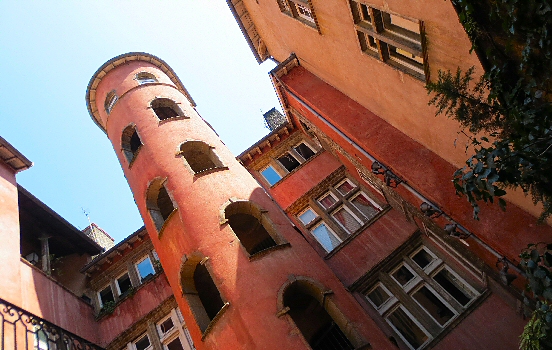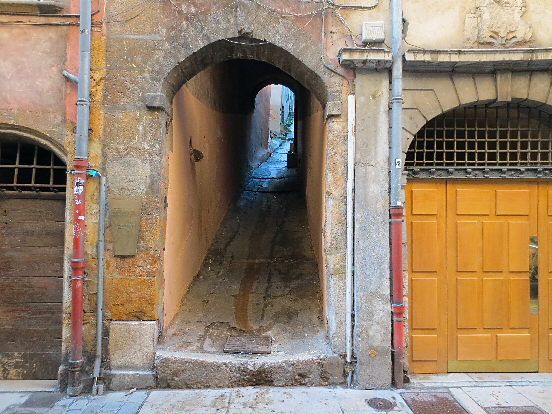You think you know a city because you’ve strolled its main streets? Wrong. The real Lyon is stitched together by traboules, invisible veins running beneath the overcoat of façades.
On the surface, Lyon is a charming city with lots of things to discover. The Fourvière hill has a stunning basilica with great view of the area, easily ascended by funicular. The old part, Vieux Lyon, features small alleys and the city is renowned for its great food (just stay away from the quenelle).
But those are the postcards. The traboules are the secret handshake. They say there are about 400 of them. Only forty or so are willing to open their doors to the curious. Most hide in Vieux Lyon, behind silent courtyards, folding through centuries.
 Courtyard of a traboule at Rue du Boeuf.
Courtyard of a traboule at Rue du Boeuf.
These historical hidden passageways go back to the age when Lyon was Lugdunum, a Roman heart. When the city was young, folk needed shortcuts from their hearths to the river Saône. The streets ran parallel to the water, so the traboules cut across. The latin name literary translate to “passing through”.
 Punaise passage in old town.
Punaise passage in old town.
Silk workers later adopted these hidden alleys to cart bolts of silk across the city without carrying them around walls and corners. In wartime, they became clandestine arteries for the Resistance in occupied Lyon.
So go chase the hidden. Don’t stop at the facades. Because in Lyon, the truth is in the cracks, the spaces between.

Comments
No comments yet.
Leave a reply